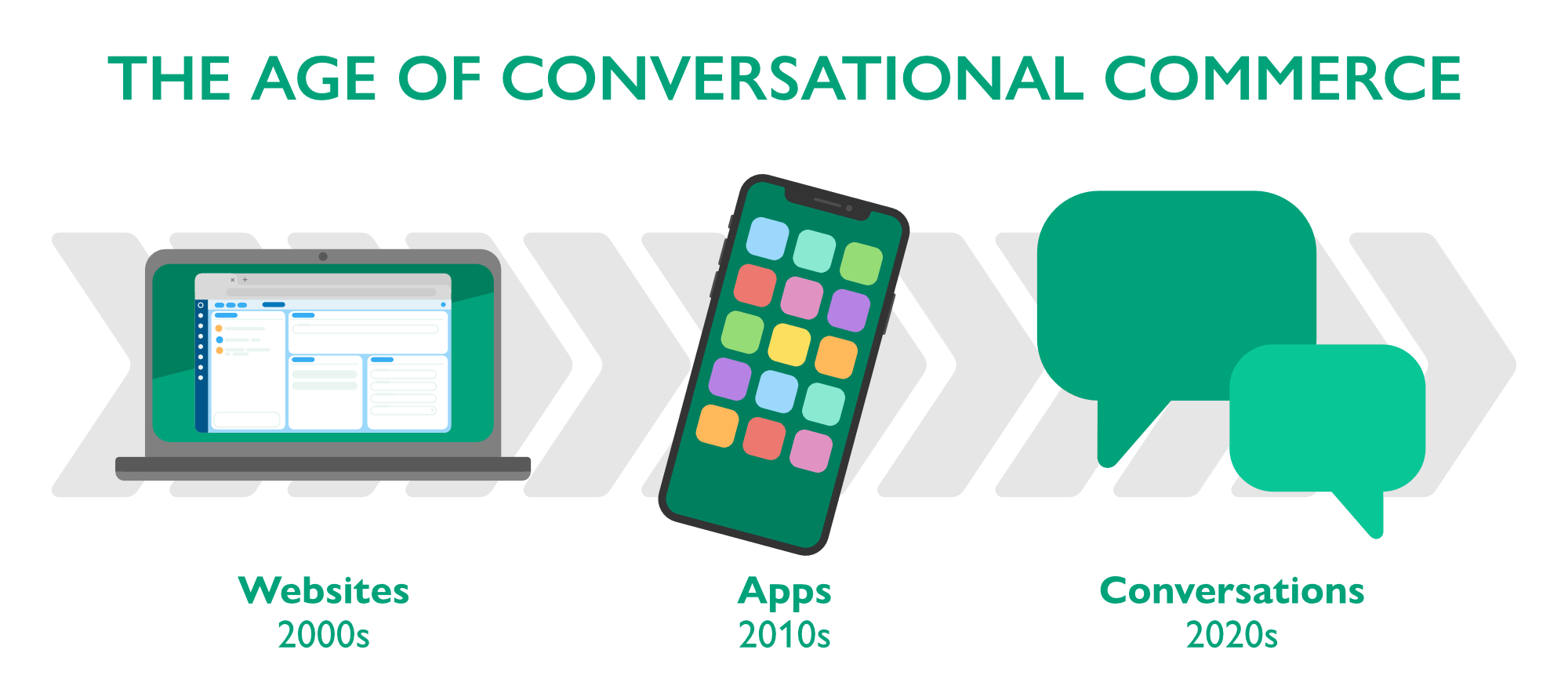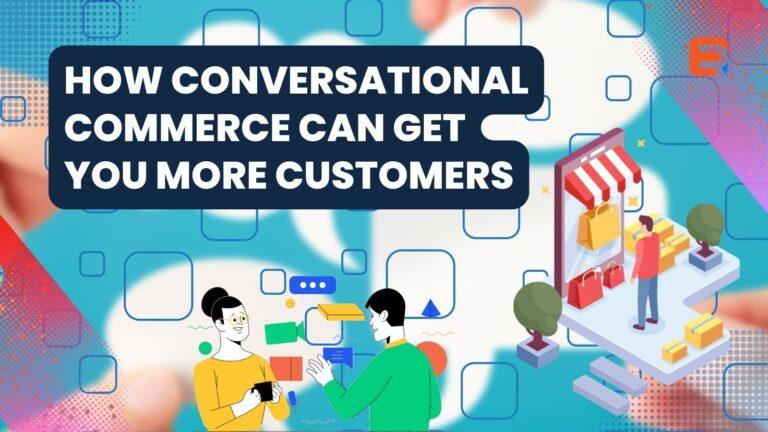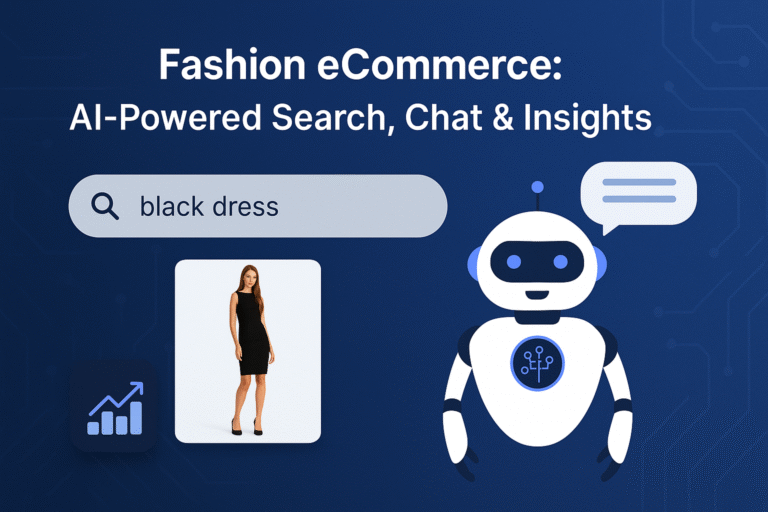Conversational commerce, also known as conversational AI or chatbots, has been the next big thing in eCommerce since the early 2000s but has not quite lived up to expectations.
However, with recent developments in AI, machine learning, and natural language processing (NLP), conversational commerce may finally be ready to take off as an effective way to reach and sell your customers.
What Is Conversational Commerce?

Conversational commerce (also known as conversational marketing) refers to the ability to have a natural conversation with your customers through various digital and social channels, such as email and text messaging, allowing you to engage with them in ways that are more human-to-human and personal.
According to Phocuswire, it was essential to any brand’s strategy in 2018—and beyond.
It is a new way of doing business that involves using chatbots to communicate with customers. This Social commerce is in its infancy, but it has the potential to change the way businesses interact with customers.
It’s not just for businesses; individual consumers can use conversational commerce too. Just as easy as texting, Facebook Messenger or WhatsApp will allow you to ask questions and get responses from your favorite companies like Nike or Amazon.
But one question remains: how does conversational commerce benefit you? So let’s take a look at three key ways conversational commerce helps retailers sell more goods:
- There’s increased engagement. When someone uses chatbot technology to order a product, they will likely stay on the site longer.
- Traditional marketing methods like email campaigns or social media ads are less effective at generating sales than in-app messages.
- There’s improved customer service since interactions are based on human-to-human communication rather than computer-to-computer input and output.
The more personal this form of commerce becomes, the better your chance of making a sale!
Why You Should Use Conversational Commerce

This type of commerce is more effective than traditional methods and can help you get more customers. Here are nine reasons why you should use conversational commerce:
- Conversational commerce It’s more personal. Chatbots allow you to have one-on-one conversations with your customers, which makes the experience more personal and tailored to their needs.
- It’s faster. Customer service for many businesses often takes weeks or months before someone gets back to them. With chatbots, customers can get responses within minutes, meaning it takes less time to make a purchase decision.
- It gives people an efficient and straightforward way to find what they’re looking for. When using a chatbot interface, people don’t need to spend as much time searching through content or scrolling through product listings; they need to ask the bot questions about what they want, and they’ll get an answer immediately.
- It reduces wait times. The average customer spends 25% of their day waiting on hold for customer service, but this doesn’t happen when using chatbots because there are no hold times.
- It increases conversions by 38%. A study by Agility shows that 83% more purchases were made from companies that used conversational commerce than those that didn’t. Another study found that customers better-perceived brands that used chatbots. These studies show how conversational commerce can increase your conversion rates and turn around your company’s fortunes.
- You can learn more about what your customers want and need by talking to them.
- You can offer them products or services they are more likely to purchase.
- Conversational commerce can encourage customers to purchase additional products or services. For example, if a customer is interested in buying a dress, you can suggest they buy a matching purse.
- Another way to increase sales is by providing excellent customer service. Treating your customers respectfully and going out of your way to provide excellent customer service will make them return for more.
Companies That Can Use Conversational Commerce

We’ve rounded up some of the most exciting use cases for conversational commerce below:
- Marketing agencies are using chatbots to create personalized campaigns for clients, who can now get responses from customer service representatives 24/7 without having to wait on hold or go through automated menus.
- Brands like HBO and Volvo implement chatbots into their messaging platforms as assistants for live events like premieres or product launches. Participants can engage with the bots throughout the event and have questions answered during Q&A sessions.
- So you can watch Westworld without constantly checking your phone.
- There’s been an increase in chatbot-powered peer-to-peer lending, where users can borrow money by connecting directly with individuals or organizations instead of going through banks. So far, Kiva Micro funds are one example of an organization lending money via chatbots on Facebook Messenger and Kik.
Challenges in Adopting New Technology
Any time a business adopts new technology, there are bound to be some challenges. This is especially true about conversational commerce. Here are five potential challenges you may face
- Convincing people that the experience is as good as (or better than) talking to someone on the phone.
- Training your staff on how to use conversational interfaces with customers.
- Ensuring they have enough bandwidth and resources to handle high call volumes or chat inquiries without inconveniencing customers.
- Keeping up with new features and updates from your chosen platform provider, and
- Working out what customer data will be collected by the system and who owns this data.
These are just a few of the potential challenges of adopting conversational commerce. There are also benefits such as increased customer convenience and lower business costs. The decision to adopt should consider both sides of the equation – weighing all the pros and cons.




